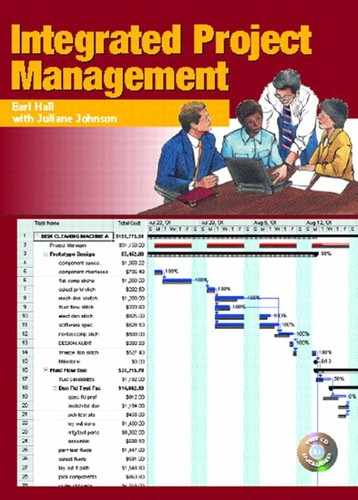Preparations for the First Project Task List Meeting
A task is an individual job within a project. The total number of required tasks is determined by the size and complexity of the project. There can be 40 or fewer tasks for a small basic project and 200 or more for a large basic project, with every one being important and necessary. The “master list” of all the tasks is called the project task list. Creating this project task list is the project team's first collaborative effort. The project manager covers the steps for creating this list at the kickoff meeting.
Because the project task list names every task in the project, it must be comprehensive. Any job omitted from the task list will not get done. To begin to pull together a comprehensive task list, each team member is instructed at the end of the kickoff meeting to prepare a list of tasks in his or her area of expertise, and to be thorough about it. Reaching beyond their area of expertise, each member must add tasks in other specialty areas. This action is to be done following the kickoff meeting, and the list must be brought to the next meeting.
Team members also are instructed to not include merely the obvious tasks from their specialty area in their list, but to seek task suggestions from those “who have been there,” or persons in their firm with experience in a similar project.
In addition, they are asked to reach outside their area of expertise for tasks in other specialties so that the full extent of their collective imaginative effort will be utilized in the project and to assure that no task is left out. Often, an outsider's list will contain a task—or even an entire work package—another specialist forgot or assumed that would be included. If an entire work package is missed, it is necessary to enlarge the project team to include someone to cover the overlooked area.
The essence of IPM is to focus as much expertise as possible on the planning process and to do it as quickly as possible. Team members working independently and in parallel on an action item, as just described, fulfill both of these objectives.
While working on this action item (and others to come), team members usually have other job responsibilities. However, an action item must be considered a primary effort, having a prominent place in each team member's day planner, and not something to be fitted in haphazardly.
When the project team reconvenes at the next meeting, their individual task lists will be used to create a composite task list. Determining when to hold this meeting is based on the team's collaborative decision. Altogether, two meetings will be held to create the project task list in its entirety. Figure 5-1, which is lifted from the sample planning Gantt chart, depicts three days total time, or two 2-hour project task list meetings, with team members working on action items between meetings.
Figure 5-1.
![]()
